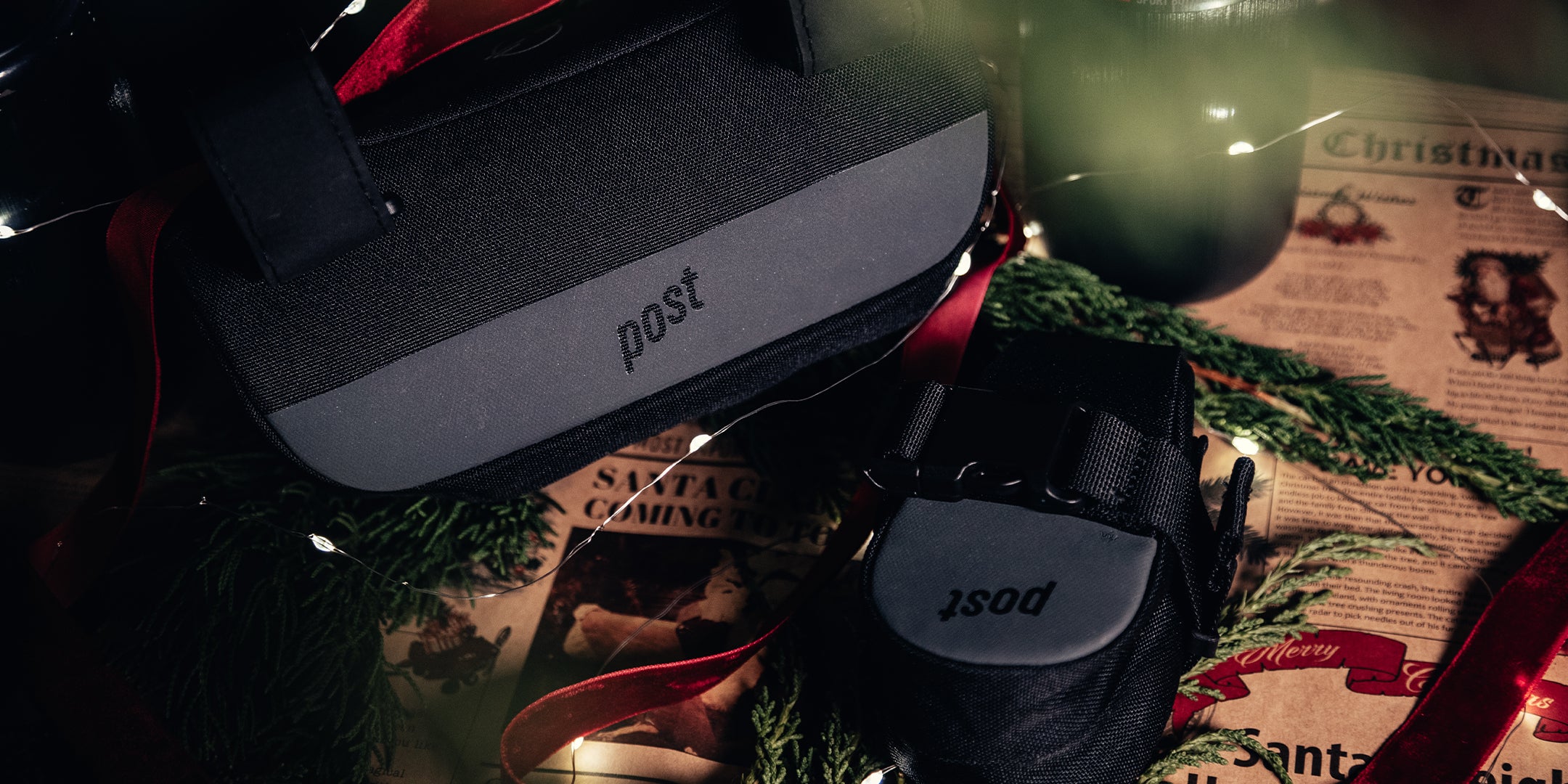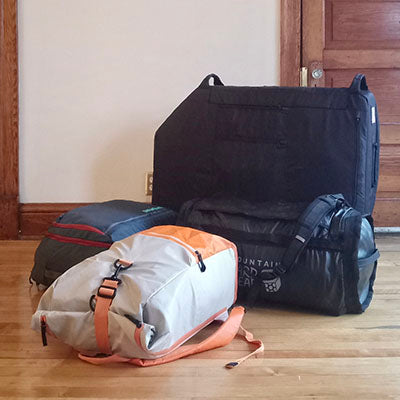"I also discovered a new addiction: multi-day riding in Southeast Asia."
The new Slim Packs have been something I’ve worked on ever since my first true overnight cycling trip in 2019. Before then, I had traveled extensively, spending weeks or months in unfamiliar places, riding my bike in new places but always with the comfort of returning to my apartment/hotel the same day. This type of riding, though satisfying, limited my ability to truly experience the destinations I visited. Riding somewhere to stay overnight was entirely new to me.

My friend Marian and I planned a three-day ride along Vietnam’s coast, starting in Saigon and stopping at various resorts. Each day covered about 100 miles. We wanted to ride it as fast as possible, partly to limit our exposure to the searing sun, but mostly because we love putting down the watts. Hammering on rides was (and still is) how we enjoy cycling. However, on a multi-day trip, we didn’t want anything to impede our experience of speed. It felt paradoxical—riding as fast as we could, only to slow down and savor the destination—but we embraced it. We also wanted to keep costs low; after all, if it became too expensive, why not just rent a car and drive instead?
 Why do we subject ourselves to this?
Why do we subject ourselves to this?
We’d also only do this trip if we packed as minimally as possible. Heavy, bulky bags would only hinder our ability to ride fast. And, frankly, it sucks to ride a heavy bike if you crave speed like us. Fortunately, Vietnam is uniquely suited for this style of travel. The affordability and availability of amenities made it possible to pack light without sacrificing comfort. Accommodations? Ride up to any local hotel and stay for less than $10 a night. Need sandals? Many hotel rooms have them ready for guests (NOT a thing with hotels in Europe). The weather is also such that you only need shorts and a shirt. Critics will say this isn’t “touring”, but for us, the conveniences made the adventure desirable.

Over time, I optimized what to bring on my trips.
In preparation for the trip, I did what many bike tourers do: laid out everything I’d need for three days. Clothes, toiletries, charging cables, spare tubes—check, check, check. But as a self-proclaimed weight weenie, I took it one step further and weighed everything, carefully considering size and weight (to the gram) in every decision. Then, I turned my attention to designing bags that could carry it all.
At the time, I was finishing up my first frame bag, and sewed my first seat bag. What I saw on the market didn’t meet our needs. Most bikepacking bags were oversized, built for carrying bivies and stoves for backcountry adventures—far more capacity and durability than I required. These bags often stuck out awkwardly from the saddle, swaying with every pedal stroke. I saw an opportunity to create minimalist, lightweight bags designed for the kind of fast-paced, short-term trips Marian and I were doing.
My first prototype seat bag wasn’t very good. It swung uncomfortably while riding, was awkward to use, and didn’t look great. Still, the trip was a success. We rode fast, we rode far, but I also discovered a new addiction: multi-day riding in Southeast Asia. The affordability, delicious street food, scenic terrain, and warm, welcoming people made it irresistible. Over the next four years, I continued refining my designs, testing them on trips around Asia and all over the world.
 These are just some of the dozens of seat bag prototypes I sewed over the years.
These are just some of the dozens of seat bag prototypes I sewed over the years.
Designing the perfect bag took a lot of failed prototypes. I experimented with various closures—zippers, lids with hooks and straps—before settling on an expandable rolltop with buckles. I tackled the issue of bag swing by developing an adjustable system that hugged the bag tightly to the bike. This system worked regardless of the saddle and seatpost dimensions, which varied between bikes. I also addressed strap management; why should straps flap in the wind, costing precious watts and looking untidy? Small details like these mattered.

 My short speedpacking trips have taken me everywhere from staying at friends' places overnight back home in California to exploring towns around Lake Como.
My short speedpacking trips have taken me everywhere from staying at friends' places overnight back home in California to exploring towns around Lake Como.
Time for production
I knew simplicity would be key for the new bags so this meant focusing intensely on details and execution. For example, there’s a button that secures the saddle rail strap to the loops on the outside of the Seat Pack. Once the strap is adjusted to fit your bike’s saddle and seatpost, it can be buttoned in and locked. Why? Because without that button, that strap has fallen out on me, on more than one trip, when I took the bag off the bike. Adding that button was a small but essential improvement, and I paid similar attention to every detail during testing.

Now you know why there's a button on this strap.
It took several years of iteration, constantly making bags on my sewing machines, and constantly going on trips testing every little change to the prototypes, getting feedback from others, and so on. As an industrial designer, this is the process I love. Once I was confident with the bags, it was time to move to production.
I felt it was the right time and application to utilize RF seam welding—primarily for its waterproofing capability—but also because welded bags have a clean, stitch-free look that complements today’s bikes. While fabric welding technology has been around for a while, it comes with its own set of limitations. One major limitation is that bag shapes must be extremely simple. This is why many welded bags are simple 2D shapes extruded sideways to create volume. Additionally, since seam-welded bags are constructed by pressing fabric pieces together against a mold, the mold must be removed from the bag after welding—usually through a zipper or opening—further necessitating design simplicity.
These limitations are why I hadn’t used seam welding on my earlier bags. For example, achieving the complex wide-to-narrow form of the Frame Pack would have been nearly impossible with this method.I partnered with a bag factory that specializes in seam welding here in Vietnam, just an hour’s riding distance from Saigon. After riding out to the factory with my sewn prototype, I presented the factory the same bags I just rode with, and pretty soon we developed the first batch of welded prototype samples. All said and done—after a few rounds of revisions and a call for testers to our followers—we produced the final bags you see online today.

As with all production we do, I oversee things very closely.
After five years of iteration, I’m proud to present the Slim Packs. These bags do exactly what I need: they let me ride fast while ensuring I can carry enough gear to slow down and enjoy the places I’ve ridden to.
These bags might not be for everyone. Adventurous bikepackers who seek full backcountry trips or multi-week, self-supported tours may find them too small or lightweight. But for riders who value speed and compactness, these bags are the perfect fit. If you’ve never tried packing light and riding fast, I encourage you to give it a go. These short, fast trips offer a unique and rewarding touring experience. By packing minimally, you might carry less, but you learn to adapt—and the experience becomes no less fulfilling.
Pack light and ride fast,
-Marc Mendoza
Founder & Designer @ Post Carry Co.



